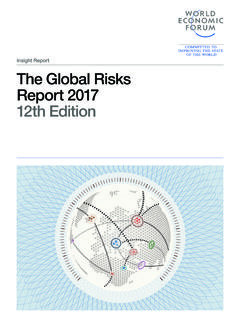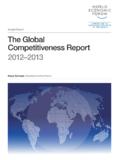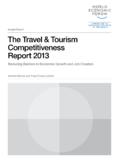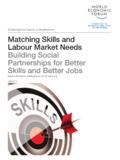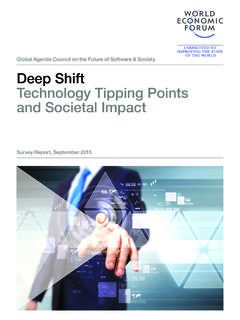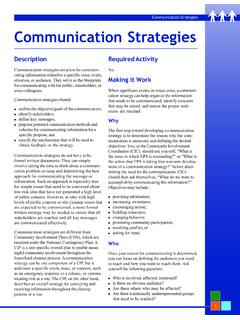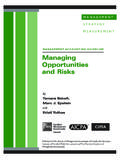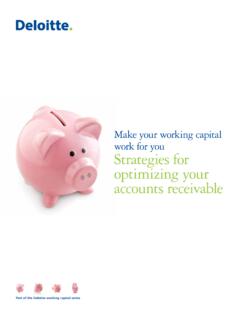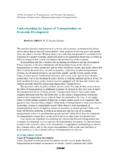Transcription of Net-Zero Challenge: The supply chain opportunity
1 In collaboration with Boston Consulting Group Net-Zero Challenge: The supply chain opportunity INSIGHT REPORT. JANUARY 2021. Cover: Illustration by Janne Livonen Images: Getty Images (pages 2 5, 8 37) and Unsplash (page 7). Contents Preface: Why we need a next level' of climate action 4. Executive summary 6. 1 A game changer for global climate action 8. 2 The big eight' 11. 3 Encouraging economics 16. 4 Overcoming barriers 22. 5 Decarbonizing supply chains: a corporate guide 26. Create transparency 27. Optimize for CO2 29. Engage suppliers 30. Push ecosystems 33. Enable your organization 35. 6 Time to move 36. Appendix: Details per supply chain 38. Methodology 40. Contributors 41. Acknowledgements 42. Endnotes 43. 2021 World Economic Forum. All rights reserved. No part of this publication may be reproduced or transmitted in any form or by any means, including photocopying and recording, or by any information storage and retrieval system. Net-Zero Challenge: The supply chain opportunity 3.
2 January 2021 Net-Zero Challenge: The supply chain opportunity Preface: Why we need a next level'. of climate action Five years after the adoption of the Paris In 2020, we saw a temporary drop in emissions Agreement, COVID-19 has reshaped the world as a result of COVID-19, at around 5 10%. and brought us to a crossroads. The health, compared to 2019 the largest since the Second social and economic consequences of this global World War. But to get on a long-term path to pandemic on top of the increasingly urgent limit warming to C, we need a structural climate crisis have taken us to an inflection point. transformation that achieves global emission How we choose to respond to these crises will reductions of this scale every year, not through determine the pathway to our Net-Zero future. To crisis, but through a well-managed transition succeed, the twin challenges of COVID-19 and that protects livelihoods and builds a resilient, Nigel Topping climate change must be addressed together, healthy, prosperous zero-carbon economy.
3 United Nations Framework Convention on Climate with zero-carbon solutions ready to accelerate Change (UNFCCC) High- our recovery to a healthier, more resilient future. Level Champion A chance to green the recovery'. The COVID-induced economic crisis gives the world Net-Zero emissions no later than If the US. a generation-defining window to bend the emissions were to deliver on President Biden's campaign curve and build back better , creating decent zero- promises, almost 75% of global GDP could have carbon jobs, driving innovation and growth, and Net-Zero targets by early Commitments by strengthening resilience to systemic shocks. Failure non-state actors are up as well. The number of to do so will result in stranded assets, dislocation Net-Zero pledges by subnational and corporate Gonzalo Munoz and widening inequalities. Now is the time for actors has roughly doubled in less than a year,4 with United Nations Framework governments to capitalize on the unique opportunity more than 2,500 cities, states, regions, companies Convention on Climate for stimulus packages to tackle COVID-19 and investors now committed to credible targets to Change (UNFCCC) High- recovery and climate change simultaneously.
4 Reach Net-Zero by 2050 at the The trend of Level Champion investors supporting decarbonization has also held The run-up to COP26, the 2021 United Nations up, as the volume of green and sustainable bond Climate Change Conference, gives reason for issuance grew by another ~10% in renewed optimism. The UK and EU are both committed to achieving Net-Zero by 2050,1 South Commitment to climate action is growing fast in all Korea and Japan have recently committed to sectors of society. Now is the time to accelerate setting Net-Zero by 2050 targets, and China the action and implementation. world's largest emitter has committed to achieving 4 Net-Zero Challenge: The supply chain opportunity Decarbonizing supply chains: the next level of corporate action Last year's report on the Net-Zero Challenge7 chains to speed and support rapid decarbonization highlighted how much more individual actors throughout the economy, and it can put pressure on governments, corporations, investors and suppliers in regions where governments do not (yet).
5 Individuals could do to bring down emissions, and do so. As 90% of the world's businesses are small many have heeded that call. This edition now puts a and medium enterprises (SMEs), working with supply spotlight on a critical factor in achieving the targets chains and connecting them with the appropriate they have set decarbonizing supply chains. tools such as the recently launched SME Climate Hub8 is a vital part of the implementation of supply - chain decarbonization will be a game ambitious corporate climate action. changer for the impact of corporate climate action. Addressing Scope 3 emissions is fundamental We call on all to act and join the Race to Zero, and for companies to realize credible climate change hope that this report helps to provide guidance on commitments. It enables companies in customer- how to move quickly on delivering on those goals. facing sectors to use their influence in supply Climate change is the single greatest threat there has ever been to our planet and livelihoods.
6 The World Economic Forum is dedicated to advancing action to decarbonize our economy and ensure a stable transition to a Net-Zero world. At our Annual Meeting in January 2020, I invited all members to set a target to achieve Net-Zero greenhouse gas emissions by 2050 or sooner. This is our Net-Zero Challenge, spearheaded by our flagship climate action community, the Alliance of CEO Climate Leaders. This report, co-authored with Boston Consulting Group, is the second in our series for the Net-Zero Challenge. It showcases the opportunity that all companies have for huge climate impact through action to decarbonize global supply chains. Klaus Schwab, Founder and Executive Chairman, World Economic Forum Net-Zero Challenge: The supply chain opportunity 5. Executive summary Addressing supply - chain emissions enables efficiency and renewable power with only marginal many customer-facing companies to impact impact on product costs. Even with zero supply - a volume of emissions several times higher chain emissions, end-consumer costs would go up than they could if they were to focus on by 1 4% at the most in the medium term.
7 Decarbonizing their own direct operations and power consumption alone and achieving a But: decarbonizing supply chains is hard. Even Net-Zero supply chain is possible with very leading companies struggle to get the data they limited additional costs. This report shows how. need and to set clear targets and standards to which their suppliers must adhere. Engaging an Among the major findings: often-fragmented supplier landscape is challenging especially when emissions are buried deep in Many companies can multiply their climate the supply chain , or when addressing them might impact by decarbonizing supply chains. For require collective action at the industry level. companies in most customer-facing sectors, end- to-end emissions are much higher than the direct Our step-by-step guide shows nine major emissions in their own operations (so-called Scope initiatives every company can undertake. 1 and 2 emissions). By engaging suppliers to create Through interviews with several dozen global a Net-Zero supply chain , companies can boost their companies that lead the way in reducing supply - climate impact, enable emission reduction in hard- chain emissions, we have identified nine key to-abate sectors, and accelerate climate action in actions: (1) build a comprehensive emissions countries where it would otherwise not be high on baseline, gradually filled with actual supplier data.
8 The agenda. (2) set ambitious and holistic reduction targets, reducing emissions by (3) revisiting product design Eight supply chains account for more than choices and (4) reconsidering (geographic) sourcing 50% of global emissions. Food, construction, strategy; (5) set ambitious procurement standards fashion, fast-moving consumer goods, electronics, and (6) work jointly with suppliers to co-fund automotive, professional services and freight abatement levers; (7) work together with peers to account for more than half of all global greenhouse align sector targets that maximize impact and level gas emissions. A significant share is indirectly the playing field; (8) use scale by driving up demand controlled by only a few companies. to lower the cost of green solutions; and finally (9) develop internal governance mechanisms Net-Zero supply chains would hardly increase that introduce emissions as a steering mechanism end-consumer costs. Around 40% of all emissions and align the incentives of decision-makers with in these supply chains could be abated with emission targets.
9 Readily available and affordable levers (< 10 [$12]. per tonne of CO2 equivalent),9 such as circularity, It is time to move. 6 Net-Zero Challenge: The supply chain opportunity FIGURE 1 Focus of this report Following the Greenhouse Gas Protocol Corporate Accounting emissions in the production of steel used in the car and Reporting Standard, emissions are typically split into that an automotive original equipment manufacturer three scopes:10 (OEM) produces. Scope 3 downstream emissions cover transport of products, usage of sold products and product Scope 1 covers the emissions from operations under a disposal. For the same automotive OEM, this refers to facility's control, including onsite fuel combustion. the emissions from its cars being driven by customers. Scope 2 covers the emissions from usage of electricity, This report focuses on the supply - chain emissions that steam, heat and/or cooling purchased from third parties. happen upstream from a company, often in the course of Scope 3 covers upstream and downstream value- creating products or services that the company buys as chain emissions.
10 For the purpose of this report, we well as on the Scope 1 and 2 emissions of the respective refer to Scope 3 upstream emissions as supply - chain end consumer-facing companies in the example emissions, covering procured products, transport of above, this would cover the automotive OEM itself. The suppliers and business travel. For example, this covers report does not address downstream emissions. Scope 3 Upstream Scope 1 Scope 3 Downstream Emissions from operations under Emissions from procured products, facility's control, including onsite Emissions from transport of products, transport of supplies, business travel fuel combustion usage of sold products, product disposal Scope 2. Emissions from usage of electricity, steam, heat and/or cooling Source: GHG Protocol, BCG purchased from third parties Net-Zero Challenge: The supply chain opportunity 7. 1 A game changer for global climate action Tackling supply - chain emissions offers companies the opportunity to multiply their climate impact several times over.
